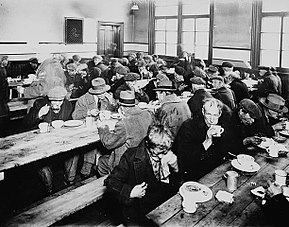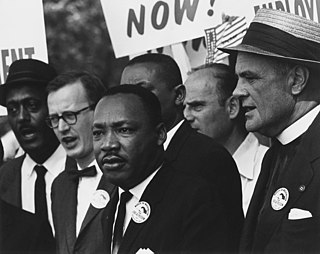
In politics, humanitarian aid, and the social sciences, hunger is defined as a condition in which a person does not have the physical or financial capability to eat sufficient food to meet basic nutritional needs for a sustained period. In the field of hunger relief, the term hunger is used in a sense that goes beyond the common desire for food that all humans experience, also known as an appetite. The most extreme form of hunger, when malnutrition is widespread, and when people have started dying of starvation through lack of access to sufficient, nutritious food, leads to a declaration of famine.
Famine relief is an organized effort to reduce starvation in a region in which there is famine. A famine is a phenomenon in which a large proportion of the population of a region or country are so undernourished that death by starvation becomes increasingly common. In spite of the much greater technological and economic resources of the modern world, famine still strikes many parts of the world, mostly in the developing nations.

Food Not Bombs (FNB) is a loose-knit group of independent collectives, sharing free, usually vegan and vegetarian food with others. The group believes that corporate and government priorities are skewed to allow hunger to persist in the midst of abundance. To demonstrate this, FNB serves surplus food gathered from grocery stores, bakeries and markets which would otherwise go to waste, or occasionally has already been thrown away. The group exhibits a form of franchise activism.
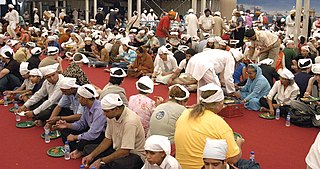
In Sikhism, a langar is the community kitchen of a gurdwara, which serves meals to all free of charge, regardless of religion, caste, gender, economic status, or ethnicity. People sit on the floor and eat together, and the kitchen is maintained and serviced by Sikh community volunteers who are doing seva. The meals served at a langar are always lacto-vegetarian.

A food bank is a non-profit, charitable organization that distributes food to those who have difficulty purchasing enough to avoid hunger, usually through intermediaries like food pantries and soup kitchens. Some food banks distribute food directly with their food pantries.
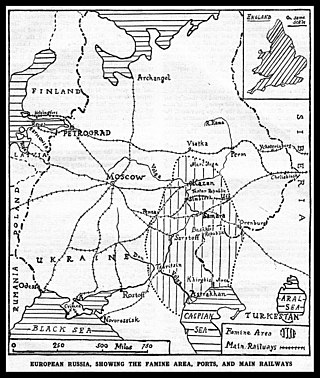
The Russian famine of 1921–1922, also known as the Povolzhye famine, was a severe famine in the Russian Soviet Federative Socialist Republic that began early in the spring of 1921 and lasted until 1922. The famine resulted from the combined effects of severe drought, the continued effects of World War I, economic disturbance from the Russian Revolution, the Russian Civil War, and failures in the government policy of war communism. It was exacerbated by rail systems that could not distribute food efficiently.
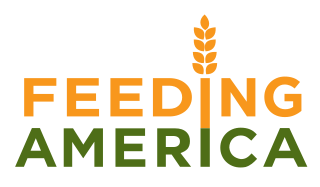
Feeding America is a United States–based non-profit organization that is a nationwide network of more than 200 food banks that feed more than 46 million people through food pantries, soup kitchens, shelters, and other community-based agencies. Forbes ranks it as the largest U.S. charity by revenue. Feeding America was known as America's Second Harvest until August 31, 2008.
The Arkansas Foodbank is a non-profit food bank located in Little Rock, Arkansas. The Arkansas Foodbank distributed more than 20.9 million pounds of food and grocery products to its member agencies for Arkansans in need in 2013, according to chief executive officer, Rhonda Sanders.

Imaret, sometimes also known as a darüzziyafe, is one of a few names used to identify the public soup kitchens built throughout the Ottoman Empire from the 14th to the 19th centuries. These public kitchens were often part of a larger complex known as a külliye, which could include hospices, mosques, caravanserais and colleges. The imarets gave out food that was free of charge to specific types of people and unfortunate individuals. Imarets were not invented by the Ottomans but developed under them as highly structured groups of buildings.
FareShare is an Australian not-for-profit food rescue organisation that operates Australia's largest charity kitchens located in Melbourne and Brisbane. Its mission is to mobilise volunteers to cook delicious, free meals from rescued, donated and homegrown ingredients to improve the lives of Australians in hardship.
Hunger Task Force, Inc. is a non-profit, anti-hunger public policy organization in Milwaukee, Wisconsin. Hunger Task Force works to end hunger in Milwaukee County, Wisconsin by providing direct food delivery services, and works to end future hunger by advocating for fair and responsible administration of federal nutrition assistance programs.

Hunger in the United States of America affects millions of Americans, including some who are middle class, or who are in households where all adults are in work. The United States produces far more food than it needs for domestic consumption—hunger within the U.S. is caused by some Americans having insufficient money to buy food for themselves or their families. Additional causes of hunger and food insecurity include neighborhood deprivation and agricultural policy. Hunger is addressed by a mix of public and private food aid provision. Public interventions include changes to agricultural policy, the construction of supermarkets in underserved neighborhoods, investment in transportation infrastructure, and the development of community gardens. Private aid is provided by food pantries, soup kitchens, food banks, and food rescue organizations.
Chronic hunger has affected a sizable proportion of the UK's population throughout its history. Following improved economic conditions that followed World War II, hunger became a less pressing issue. Yet since the lasting global inflation in the price of food that began in late 2006 and especially since the financial crisis of 2009, long term hunger began to return as a prominent social problem. Albeit only affecting a small minority of the UK's population, by December 2013, according to a group of doctors and academics writing in the British Medical Journal, hunger in the UK had reached the level of a "public health emergency".

Pangat is a word derived from the Sanskrit word pankti that means a line, a row, or a group. It is a synonym for Guru Ka Langar. In a Pangat, food is served by volunteers (Sevadars) to people of all religions who sit together to eat. Pangat is about eating food while sitting in rows with no discrimination on the basis of caste, creed, race, ethnicity, gender, religion or economic status. According to the beliefs of Sikhism, nobody sleeps without eating, nor should anybody die of hunger.
Buddhist Global Relief is an organization of socially engaged Buddhists with a mission to "combat chronic hunger and malnutrition". It was founded by Bhikkhu Bodhi in 2008.
Felix Project is a United Kingdom charitable organization that saves surplus food from suppliers and redistributes it to charities. It has the dual aim to help reduce food surplus. The Waste & Resources Action Programme estimate that 10 million tonnes of food was thrown away in the UK in 2016 and help relieve food poverty

The Capuchin Soup Kitchen (CSK) is a religiously affiliated soup kitchen and non-profit organization located in Detroit, Michigan. It was founded by the Capuchin friars to provide food for the poor during the Great Depression and is sponsored by the Capuchin Franciscan Province of St. Joseph. While it was initially established as a soup kitchen, CSK now includes a food and clothing bank, a drug rehabilitation program, and an after school and summer youth program. Through its various ministries CSK serves approximately 560,000 individuals each year.

St. Mary's Food Bank Alliance is a nonprofit, nonsectarian organization located in Phoenix, Arizona. Founded in 1967 by John van Hengel, St. Mary's was the first modern organization to operate using the food bank model, which spread throughout U.S. and the rest of the world. Today, St. Mary's is recognized as the world's first food bank.

Nishkam SWAT is a Sikh charity which supports the homeless within the United Kingdom.
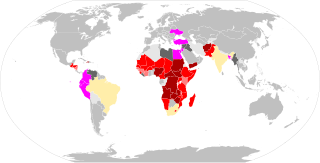
During the COVID-19 pandemic, food insecurity has intensified in many places – in the second quarter of 2020 there were multiple warnings of famine later in the year. In an early report, the Nongovernmental Organization (NGO) Oxfam-International talks about "economic devastation" while the lead-author of the UNU-WIDER report compared COVID-19 to a "poverty tsunami". Others talk about "complete destitution", "unprecedented crisis", "natural disaster", "threat of catastrophic global famine". The decision of WHO on 11 March 2020, to qualify COVID as a pandemic, that is "an epidemic occurring worldwide, or over a very wide area, crossing international boundaries and usually affecting a large number of people" also contributed to building this global-scale disaster narrative.
